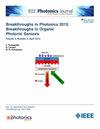Decomposing-Recomposing Network: A Novel Reconstruction and Enhancement Approach for Low-Light Image
IF 2.1
4区 工程技术
Q3 ENGINEERING, ELECTRICAL & ELECTRONIC
引用次数: 0
Abstract
Low-light imaging has long been a fundamental yet challenging area in optical imaging, primarily due to photon-starved conditions that not only impair image visibility but also amplify sensor noise. Traditional enhancement techniques mainly focus on illumination adjustments and often fall short in addressing the inherent trade-off between boosting brightness and suppressing noise. Moreover, many existing methods assume expert-level noise management during image capture, thereby overlooking the crucial frequency-dependent characteristics of noise distribution. Our observations reveal that while simultaneously enhancing brightness and reducing noise is challenging, noise intensity indeed varies across different frequency layers. In low-light images, the noise predominantly appears as Additive White Gaussian Noise (AWGN) concentrated in the high-frequency domain. Inspired by this phenomenon, we introduce a novel model based on the principles of decomposition and recomposition. Extensive experiments conducted on several baseline low-light datasets—including LOL-v1, LOL-v2, MEF, LIME, DICM, and NPE—demonstrate that our approach not only outperforms the latest methods quantitatively and qualitatively but also excels in handling real and complex low-light scenarios. Furthermore, our method consistently produces superior visual outcomes compared to existing techniques.分解-重组网络:一种新的弱光图像重建与增强方法
微光成像长期以来一直是光学成像的一个基本但具有挑战性的领域,主要是因为光子匮乏的条件不仅会损害图像的可见性,而且会放大传感器噪声。传统的增强技术主要集中在照度的调整上,在提高亮度和抑制噪声之间的权衡问题上往往存在不足。此外,许多现有方法在图像捕获过程中假设专家级噪声管理,从而忽略了噪声分布的关键频率依赖特性。我们的观察表明,虽然同时提高亮度和降低噪声是具有挑战性的,但噪声强度确实在不同的频率层上有所不同。在低光图像中,噪声主要表现为集中在高频域的加性高斯白噪声(AWGN)。受这一现象的启发,我们引入了一种基于分解和重组原理的新模型。在多个基线低光数据集(包括llo -v1、llo -v2、MEF、LIME、DICM和npe)上进行的大量实验表明,我们的方法不仅在定量和定性上优于最新方法,而且在处理真实和复杂的低光场景方面也表现出色。此外,与现有技术相比,我们的方法始终产生更好的视觉效果。
本文章由计算机程序翻译,如有差异,请以英文原文为准。
求助全文
约1分钟内获得全文
求助全文
来源期刊

IEEE Photonics Journal
ENGINEERING, ELECTRICAL & ELECTRONIC-OPTICS
CiteScore
4.50
自引率
8.30%
发文量
489
审稿时长
1.4 months
期刊介绍:
Breakthroughs in the generation of light and in its control and utilization have given rise to the field of Photonics, a rapidly expanding area of science and technology with major technological and economic impact. Photonics integrates quantum electronics and optics to accelerate progress in the generation of novel photon sources and in their utilization in emerging applications at the micro and nano scales spanning from the far-infrared/THz to the x-ray region of the electromagnetic spectrum. IEEE Photonics Journal is an online-only journal dedicated to the rapid disclosure of top-quality peer-reviewed research at the forefront of all areas of photonics. Contributions addressing issues ranging from fundamental understanding to emerging technologies and applications are within the scope of the Journal. The Journal includes topics in: Photon sources from far infrared to X-rays, Photonics materials and engineered photonic structures, Integrated optics and optoelectronic, Ultrafast, attosecond, high field and short wavelength photonics, Biophotonics, including DNA photonics, Nanophotonics, Magnetophotonics, Fundamentals of light propagation and interaction; nonlinear effects, Optical data storage, Fiber optics and optical communications devices, systems, and technologies, Micro Opto Electro Mechanical Systems (MOEMS), Microwave photonics, Optical Sensors.
 求助内容:
求助内容: 应助结果提醒方式:
应助结果提醒方式:


